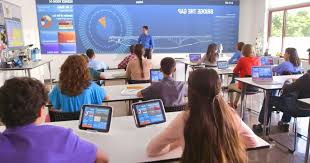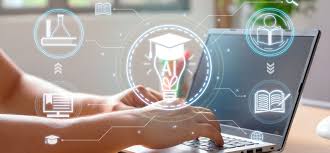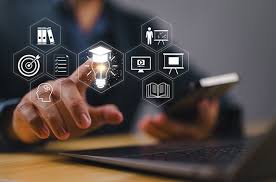The future of education is evolving rapidly, driven by technological advancements and the growing recognition of the need for innovative learning environments. As we move into a new era of education, innovations in the classroom are not just reshaping how students learn but also how teachers interact with their students. This article explores some of the most exciting innovations shaping tomorrow’s classrooms, including technology integration, personalized learning, and new teaching methodologies.
1. The Role of Technology in the Classroom
Technology is one of the key drivers of change in modern education. From interactive whiteboards to online learning platforms, educational technology has transformed the classroom experience for both teachers and students. But the future holds even more possibilities, including the integration of artificial intelligence (AI), virtual reality (VR), and augmented reality (AR) in everyday learning.
AI in Education
Artificial Intelligence is becoming a powerful tool in the classroom, helping to create personalized learning experiences for each student. AI-powered platforms can assess a student’s strengths and weaknesses, adapting lessons to meet their specific needs. For example, AI tutors can provide additional support to students who may be struggling in certain subjects.
- Benefits: Personalized learning, real-time feedback, and better student engagement.
- Future Prospects: AI will continue to evolve, providing even more tailored educational experiences and streamlining administrative tasks for teachers.
Virtual and Augmented Reality
Virtual Reality (VR) and Augmented Reality (AR) are taking learning to a whole new level by immersing students in interactive, real-world experiences. For instance, VR allows students to explore historical sites, experience different cultures, or even perform virtual scientific experiments.
- Benefits: Enhanced engagement, better retention of information, and immersive learning experiences.
- Future Prospects: As VR and AR technologies become more accessible, they will offer unprecedented opportunities for hands-on learning across various subjects.
2. Personalized Learning: One Size Doesn’t Fit All
One of the biggest innovations in education is the move toward personalized learning. Instead of a one-size-fits-all approach, personalized learning focuses on tailoring education to each student’s individual needs, interests, and learning pace. This approach is enabled by adaptive learning technologies that assess student progress and adjust the curriculum accordingly.
Benefits of Personalized Learning:
- Improved Student Outcomes: Students receive the support they need, making it easier for them to master difficult subjects.
- Enhanced Engagement: By focusing on the student’s unique needs, personalized learning fosters greater interest and motivation in the subject matter.
- Flexibility: Students can learn at their own pace, allowing them to progress faster in areas where they excel and spend more time on challenging topics.
3. Gamification and Interactive Learning
Gamification is a powerful tool in the classroom that uses game design principles to make learning more engaging and fun. By incorporating elements like scoring, challenges, and rewards into the curriculum, gamification motivates students to participate actively and learn with enthusiasm.
The Role of Gamification:
- Increases Motivation: By offering rewards and challenges, students feel a sense of accomplishment and are encouraged to continue learning.
- Fosters Collaboration: Many educational games require teamwork, which promotes social interaction and cooperative learning.
- Improves Problem-Solving Skills: Students face challenges that require critical thinking and decision-making, improving their cognitive abilities.
As game-based learning tools evolve, they will offer even more sophisticated educational experiences, making learning interactive, enjoyable, and effective.
4. Collaborative Learning and Social-Emotional Learning (SEL)
The future of education will also focus on developing students’ social-emotional skills and encouraging collaboration. While academic knowledge is important, emotional intelligence, communication, and teamwork are equally essential for success in today’s world.
Social-Emotional Learning (SEL)
Social-emotional learning involves teaching students to understand and manage their emotions, establish positive relationships, and make responsible decisions. As students become more emotionally aware, they will also improve their academic performance and develop resilience in the face of challenges.
- Benefits: Improved relationships, emotional regulation, and better conflict resolution skills.
- Future Prospects: SEL will be increasingly integrated into school curriculums, helping to create well-rounded individuals who are prepared to succeed in both personal and professional settings.
Collaborative Learning
Collaborative learning encourages students to work together on projects, fostering teamwork, problem-solving, and communication skills. In tomorrow’s classrooms, collaboration will be an essential skill, as it mirrors the teamwork required in the modern workplace.
- Benefits: Promotes critical thinking, enhances creativity, and builds interpersonal skills.
- Future Prospects: With the rise of digital collaboration tools, students will collaborate across borders, learning from diverse perspectives and cultures.
5. Sustainability and Green Schools
As the world faces significant environmental challenges, sustainability is becoming an integral part of education. Schools are adopting green technologies and teaching students about sustainability, climate change, and the importance of environmental stewardship.
Green Schools: The Future of Learning Environments
The design of green schools includes energy-efficient buildings, solar panels, and sustainable materials, all aimed at reducing environmental impact. In the classroom, students are learning how to live sustainably through hands-on activities like gardening, waste reduction, and conservation projects.
- Benefits: Reduced carbon footprint, healthier learning environments, and greater environmental awareness.
- Future Prospects: Sustainability will be increasingly integrated into school curriculums, empowering students to become environmental advocates and leaders in their communities.
6. The Rise of Hybrid and Online Learning
The COVID-19 pandemic accelerated the shift to online learning, and in the future, hybrid learning models—a blend of in-person and online education—will likely become the norm. This model allows students to access educational content from anywhere in the world, breaking down geographical barriers and making learning more flexible.
Hybrid Learning: The Future of Education
Hybrid learning combines the best of both worlds: face-to-face interaction and the flexibility of online resources. Students can attend physical classes while also accessing online materials, discussions, and assessments.
- Benefits: Flexibility, accessibility, and the ability to learn at one’s own pace.
- Future Prospects: With continued advancements in technology, hybrid learning will evolve to include even more immersive and interactive virtual experiences.
Conclusion: A New Era of Education
The future of education is bright, with innovations that are transforming the way students learn and interact with the world. By incorporating AI, VR, personalized learning, and collaborative education, tomorrow’s classrooms will provide students with the tools and skills they need to succeed in a rapidly changing world. As we move forward, education will become more accessible, engaging, and effective, setting the stage for a generation of learners who are ready to tackle the challenges of the future.
SEO Best Practices Included:
- Keywords: Future of education, innovations in education, tomorrow’s classrooms, personalized learning, AI in education, virtual reality in education, gamification, collaborative learning, hybrid learning, green schools, social-emotional learning, sustainable education.
- Headers: Organized with H1, H2, and H3 tags for optimal SEO performance and easy readability.
- Meta Description: Explore the exciting innovations shaping the future of education. Learn about the role of AI, VR, personalized learning, and hybrid learning models in transforming tomorrow’s classrooms.





